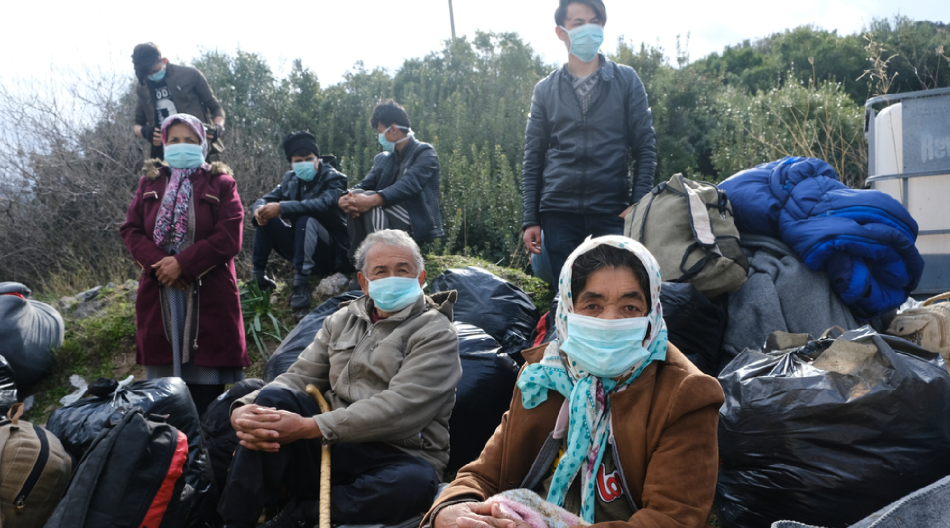
Certain groups of people are particularly vulnerable during the Covid-19 pandemic due to their disadvantaged situation in society.
Refugees and migrants
Women and men living in refugee camps are especially vulnerable to Covid-19 and other diseases as a result of living in overcrowded conditions, lack of sanitation, and lack of access to decent healthcare or vaccination programmes. Physical distancing and permanent hand washing are simply impossible.
Migrant women and men not living in camps are also vulnerable. They can face barriers to accessing healthcare, such as language, financial costs, legal restrictions and lack of awareness of available services. Pregnant refugees and migrants in Europe face a higher maternal mortality rate than non-migrant women, which may be exacerbated when healthcare services are stretched due to the Covid-19 pandemic.[1]
Lack of financial means, fear of deportation, lack of availability of health-care providers or uncertain entitlement to health care are some of the reasons cited most often by refugees and migrants for not seeking medical care in case of (suspected) Covid‑19 infection.[2]
People with disabilities
There are many people in our society for whom the recommended physical distancing measures are not an option. We have 61 million women and 47 million men with disabilities in the EU. Many of them depend on help from others to eat, dress or shower, which makes physical distancing almost impossible.[3]
When it comes to good health and access to healthcare, people with disabilities are among the most disadvantaged groups in the EU. Before the pandemic, only 20 % of women and 23 % of men with disabilities reported having good or very good health, compared with 84 % and 86 % of women and men without disabilities. [4]
The economic crisis and the strain on the health services created by the Covid-19 pandemic highlight the need to strengthen social and health protections. Women with disabilities face a higher risk of remaining without proper healthcare, even while being among those most likely to suffer from poor health.[5]
Women with disabilities are also more vulnerable to domestic violence. 34 % of women with disabilities have suffered intimate partner violence, compared with 19 % of women without disabilities. They often are not physically able to access shelters and other facilities, so they remain in violent situations.[6]
Roma people
Due to substandard and overcrowded housing conditions, Roma face an increased risk of contracting Covid-19. [7] Limited access to water, electricity and sanitation creates serious health concerns. Across the EU, 30 % of Roma households live without any access to tap water. [8] Without running water in the house, it is very difficult to frequently wash hands, which is one of the key ways to protect yourself against the Covid-19.
They are also disproportionately affected by measures taken to contain the virus. Lockdowns prevented many Roma from working as street vendors and travelling traders. They have also had a hard time claiming support and benefits available to workers in the formal labour market. [9]
Not having internet access and adequate IT equipment has created another obstacle for young Roma, as they risk falling even further behind at school.
What policymakers need to know
- Women and men from certain minority groups face additional challenges arising from societal prejudices and stereotypes. Policymakers need to identify which groups are at higher risk of discrimination and social exclusion and to propose targeted measures to mitigate these risks.
- Maintaining structural barriers in policies is costly. Ineffective implementation of the Racial Equality and the Employment Equality Directives at the national level costs the EU €224–305 billion in lost GDP and €88-110 in lost tax revenue. [10]
-
In order to identify and understand intersecting discrimination, data and research with an intersectional perspective need to be strengthened. This will enable the development of policies and legislation that adequately address these inequalities.
For more information
Gender equality and disability (factsheet)
Gender Equality Index 2019 (domain of money)
FRA: Persistent Roma inequality increases COVID-19 risk, human rights heads say (press release)